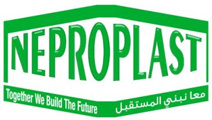PVC Conduits, Ducts & Accessories






PVC conduit has long been considered the lightest in weight compared to steel conduit materials, and usually lower in cost than other forms of conduit. It is available in three different wall thicknesses, with the thin-wall variety only suitable for embedded use in concrete, and heavier grades suitable for direct burial and exposed work. Most of the various fittings made for metal conduit are also available in PVC form. The plastic material resists moisture and many corrosive substances, but since the tubing is non-conductive an extra bonding (grounding) conductor must be pulled into each conduit. PVC conduit may be heated and bent in the field, by using special heating tools designed for the purpose.
Joints to fittings are made with slip-on solvent-welded connections, which set up rapidly after assembly and attain full strength in about one day. Since slip-fit sections do not need to be rotated during assembly, the special union fittings used with threaded conduit (such as Ericson) are not required. Since PVC conduit has a higher coefficient of thermal expansion than other types, it must be mounted to allow for expansion and contraction of each run. Care should be taken when installing PVC underground in multiple or parallel run configurations due to mutual heating effect of densely packed cables, because the conduit will deform when heated.


